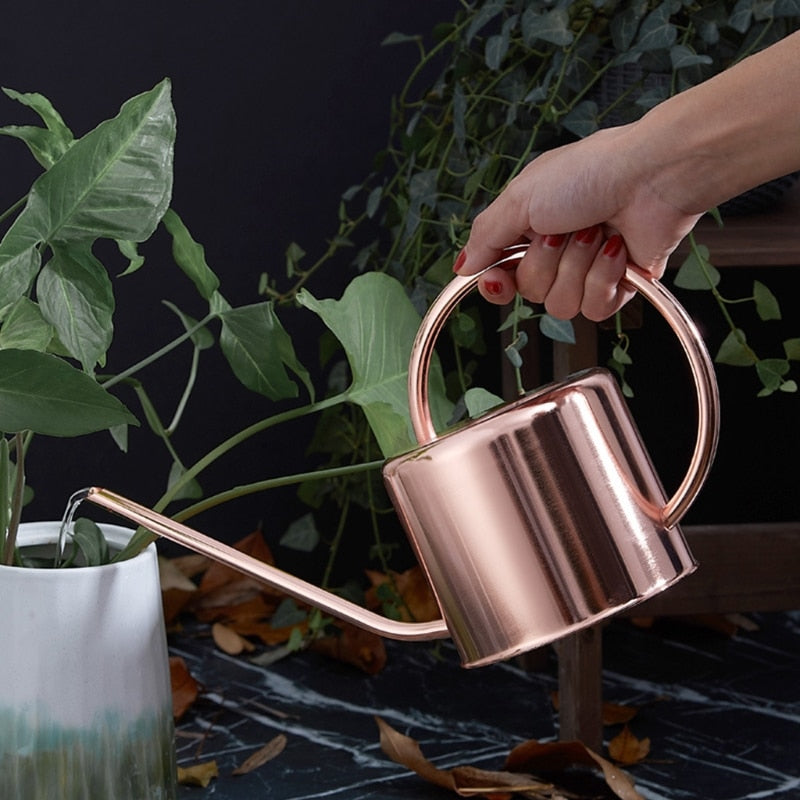
The Incredible Story of the Japanese Watering Can
of reading
In the world of gardening, there are tools, and there are works of art. The Japanese watering can belongs to the latter category.
With its gleaming copper and seemingly endless spout, it's the "Rolls-Royce" of bonsai growers. But did you know that behind this iconic object lies a single family of artisans in Tokyo?
Discover the fascinating history of this object and how to bring this unique style into your home, without the maintenance hassles.
1. The History of the Negishi Family
If you come across a genuine Japanese copper watering can today, there's a good chance it came from the workshops of Negishi Industry .

Originally, this dynasty specialized in roofing Buddhist temples. It was only in the second generation that they applied their mastery of copper to irrigation systems.
Today, Yoichi Negishi (third generation) runs the workshop in Tokyo. His quest for perfection is such that he welds the metal at over 1300°C for absolute strength. Interestingly, out of humility (a cardinal virtue in Japan), his creations often bear no seal. The object must speak for itself.

2. Why this very particular shape?
This long beak isn't just for show. It's a technical feat.
- Pressure: The length of the neck allows the water to gain speed to create a constant but gentle pressure.
- Precision: By holding the watering can by the end of the spout, the gardener can aim for a precise root to the millimeter.
This is the indispensable tool for Bonsai, where watering must imitate the morning dew ( "Jorro" in Japanese).

3. The other side of the coin: The interview
However beautiful it may be, the traditional Japanese watering can has two major drawbacks for modern apartment use:
- Oxidation: Genuine copper tarnishes very quickly. It requires regular polishing to prevent it from turning verdigris.
- Fragility: Copper is a soft metal. The slightest impact creates an irreversible dent.
- The Price: Expect to pay between €150 and €300 for an original imported piece.
4. The Modern Alternative: Style without the constraints
Do you love the aesthetics of copper and the precision of the long spout, but are you looking for a durable item for your houseplants?
We designed a version adapted to urban life. It incorporates elements of Japanese design (warm color, thin spout) but is made of stainless steel .
The elegance of copper, the strength of stainless steel
This watering can is the perfect compromise for decor lovers.
- ✨ Zero Maintenance: It retains its shine without ever oxidizing.
- 🎯 Precision Nozzle: Ideal for your Pilea, Monstera and houseplants.
- 💎 Affordable: Accessible luxury for your home.
The Art of Watering
Whether you choose Japanese tradition or the modernity of stainless steel, the important thing is to enjoy this daily ritual.
See the Designer Watering Cans collection





